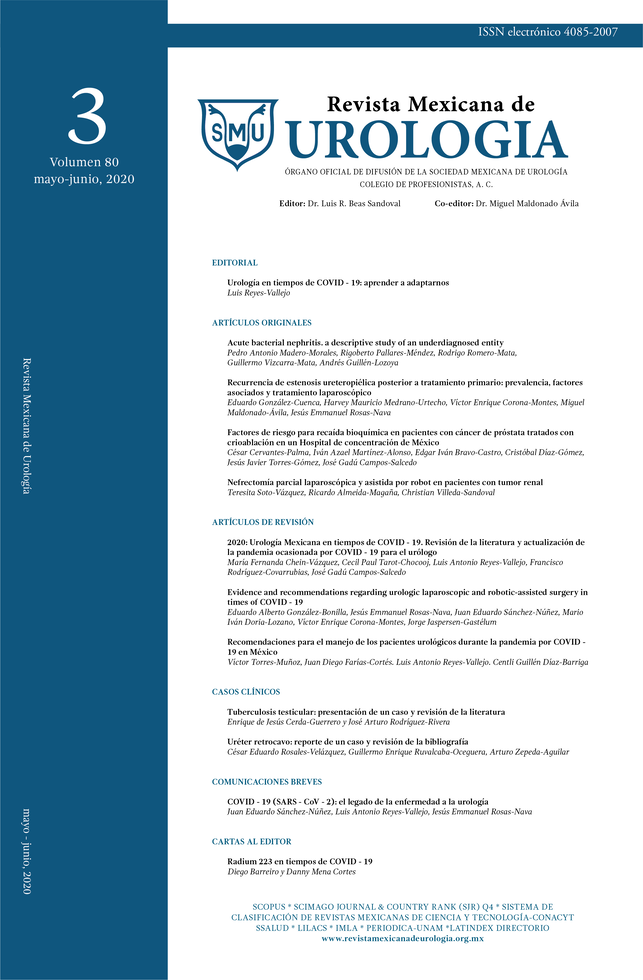Risk factors for biochemical relapse in patients with prostate cancer treated by cryoablation at a Mexican referral center
DOI:
https://doi.org/10.48193/revistamexicanadeurologa.v80i3.596Keywords:
Prostate cancer, Cryoablation, Biochemical relapse, risk factorsAbstract
Objective: To determine the risk factors for biochemical relapse (BR) in patients with prostate cancer (PCa) treated by cryoablation.
Materials and methods: A retrospective, cross-sectional, analytic study was conducted on 36 patients with PCa, treated by cryoablation at the Hospital Central Militar, within the time frame of January 2012 to October 2018. BR was determined utilizing the Phoenix criterion. A bivariate analysis was carried out and the odds ratio (OR) was calculated for different variables.
Results: Mean follow-up duration was 32.1 months, mean PSA nadir was 2.07 ng/mL after cryoablation, with a mean of 4.92 months for reaching that PSA level. Nine patients developed BR. In the risk analysis, only the PSA nadir at its cutoff value >0.8 ng/mL was identified as a risk factor for BR (OR 8.3, 95% CI, 1.40 – 49.06; p=0.01).
Discussion: Ours is the first national study that identified the PSA nadir as a risk factor for BR in patients with PCa treated by cryoablation.
Conclusions: In the present study, the PSA nadir was a risk factor for BR in patients with PCa treated by cryoablation, upon demonstrating an 8.3-fold higher risk for the development of BR after treatment.






